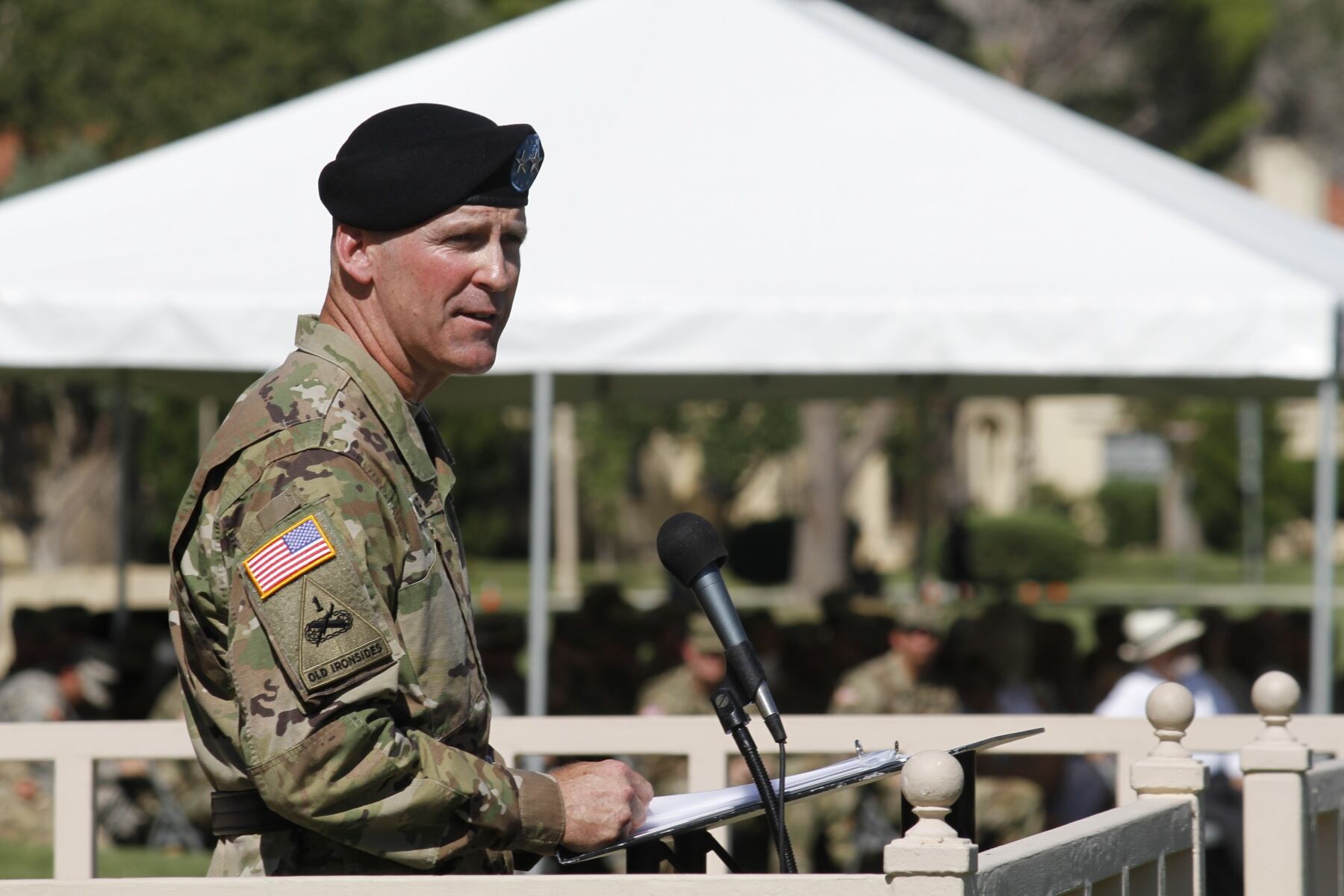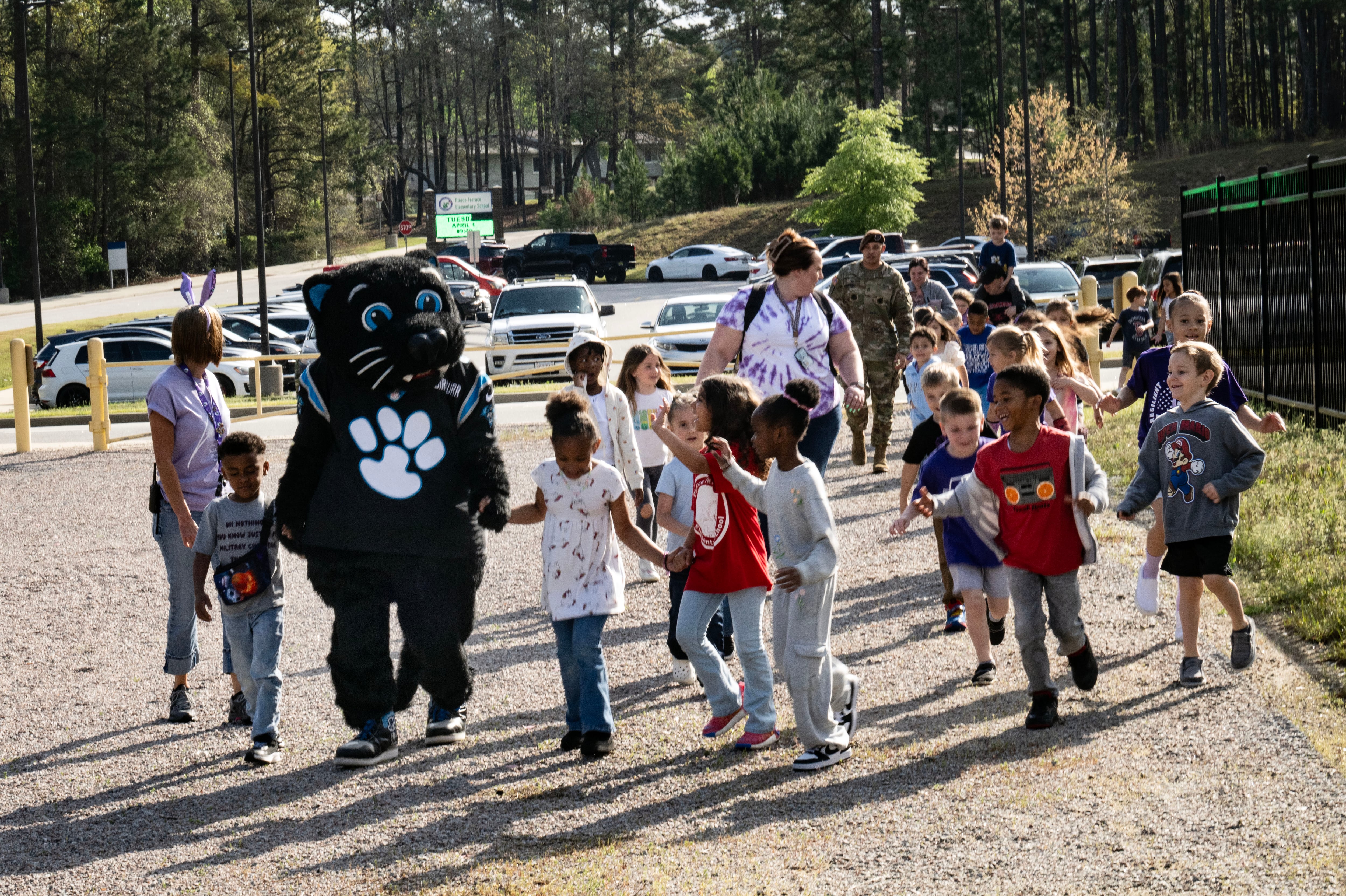As Iraq marks and celebrates the successful campaign to recapture Tal Afar, the mission for U.S. advisers in the country is far from over.
Thousands of U.S. troops, including about 400 from the 1st Armored Division’s headquarters, remain in Iraq to advise, assist and train Iraqi forces as they continue to root out the Islamic State terror group.
“While we’re not in four-man stacks with night vision goggles, throwing grenades and kicking doors down, what we are doing is training the Iraqis in tactics and doctrine that will help them execute the mission,” said Maj. Gen. Pat White, the commanding general of the 1st Armored Division out of Fort Bliss, Texas.
Officials announced Aug. 31 that, just 11 days after launching the offensive, Iraqi Security Forces had defeated ISIS in Tal Afar. The operation was the Iraqis’ largest since the brutal, months-long slog to liberate Mosul.
“Following their historic liberation of Mosul, and now a swift and decisive victory in Tal Afar, the ISF have shown, once again, they are an increasingly capable force that can protect the Iraqi people, defeat ISIS within Iraq and secure the country’s borders,” said Lt. Gen. Stephen Townsend, the commander of U.S. and Coalition forces in Iraq and Syria, in a statement. “This is yet another significant achievement for the Iraqi Security Forces and the government and people of Iraq.”
With this latest victory, the Iraqis have reclaimed 90 percent of their land from ISIS, officials said.
With Tal Afar secured, U.S. forces in Iraq will move on to the next city that the Iraqis determine, White said.
“I think it’s a continuum of where we were before,” he said, in terms of training the Iraqis to enforce their own security.
Another go
White got the call in early 2016 that his headquarters would be deploying to Iraq in a year’s time, he told Army Times in a phone interview from Baghdad.
“Enough time to make sure, as we went through what we describe as our ‘road to war’ for our warfighter exercise, we could turn the spotlight to Iraq,” he said.
It’s White’s third trip to Iraq, he said. The first was back in 2003 as a battalion commander, and the next came several years later as a brigade commander.
“We thought we were on a pretty good road to get the Iraqi Security Forces apparatus in a position where it could defend its borders,” he said of his 2008 deployment.
The Iraqis have made progress in terms of government and rule of law, he said, but their military was not prepared to fight off a force like ISIS.
“I think there will always be a sense of backsliding,” he said. “When I left last time, the trajectory was upward. And, for whatever the reasons, whatever the circumstances, the state of Iraq was put into a situation that became extremely violent, against an enemy that has no morals, has no bounds. They overwhelmed portions of Iraq very, very, very quickly.”

This time, in an adviser role, White and his headquarters made sure to integrate themselves into the latest updates and intelligence from Iraq far ahead of time. This included checking in regularly with 1st Infantry Division commander Maj. Gen. Joseph Martin, White’s predecessor in Iraq.
“Basically, as Joe Martin arrived in October, he had already come up on the net with me and said, ‘Hey, let’s start talking about how this campaign will progress, and get your team involved in what we are thinking and doing and planning,’” White said.
In January, White began sending small numbers of his planning and intelligence staff to Iraq in short cycles, to see firsthand how the fight was going.
And then six weeks out, they adopted the 1st Infantry Division’s battle rhythm, living on Baghdad time and teleconferencing into their meetings.
“Absolutely, probably the best relief in place in the last 14 years of deployments to Iraq and Afghanistan,” White said.
Wake-up call
As the 1st Infantry Division coordinated the battle for Mosul, White said, Martin told him that Tal Afar would be the next target.
The 1st Armored Division arrived in Iraq in early July, at the tail end of the fight for Mosul, which they had been plugged into since the beginning. Then, White took over for the fight in Tal Afar.
“I took the plans that were somewhat nascent, and [we began] developing those for the next step in this campaign to defeat Daesh in Iraq,” White said, using an alternate name for ISIS.
Speaking shortly before the battle, White described Tal Afar as about a quarter the size of Mosul in both land and population, and so anticipated a quicker victory.
“If I had to predict, although I’m not a predictor, I would say that this battle for Tal Afar will be significantly shorter in time,” he said. “It will be no less violent in the application of the fight itself. The human capital involved somewhat less, but significant.”
And while they were optimistic before, White said, the Iraqis have had a wake-up call.
“They have seen the darkness of Daesh right up in their face for the last two and a half years,” he said. “It was not a pretty sight, and I believe they are wholly in line with each other to support getting Daesh out of here and getting life back to normal — as normal as it can be for the Iraqi people.”
Meghann Myers is the Pentagon bureau chief at Military Times. She covers operations, policy, personnel, leadership and other issues affecting service members.




